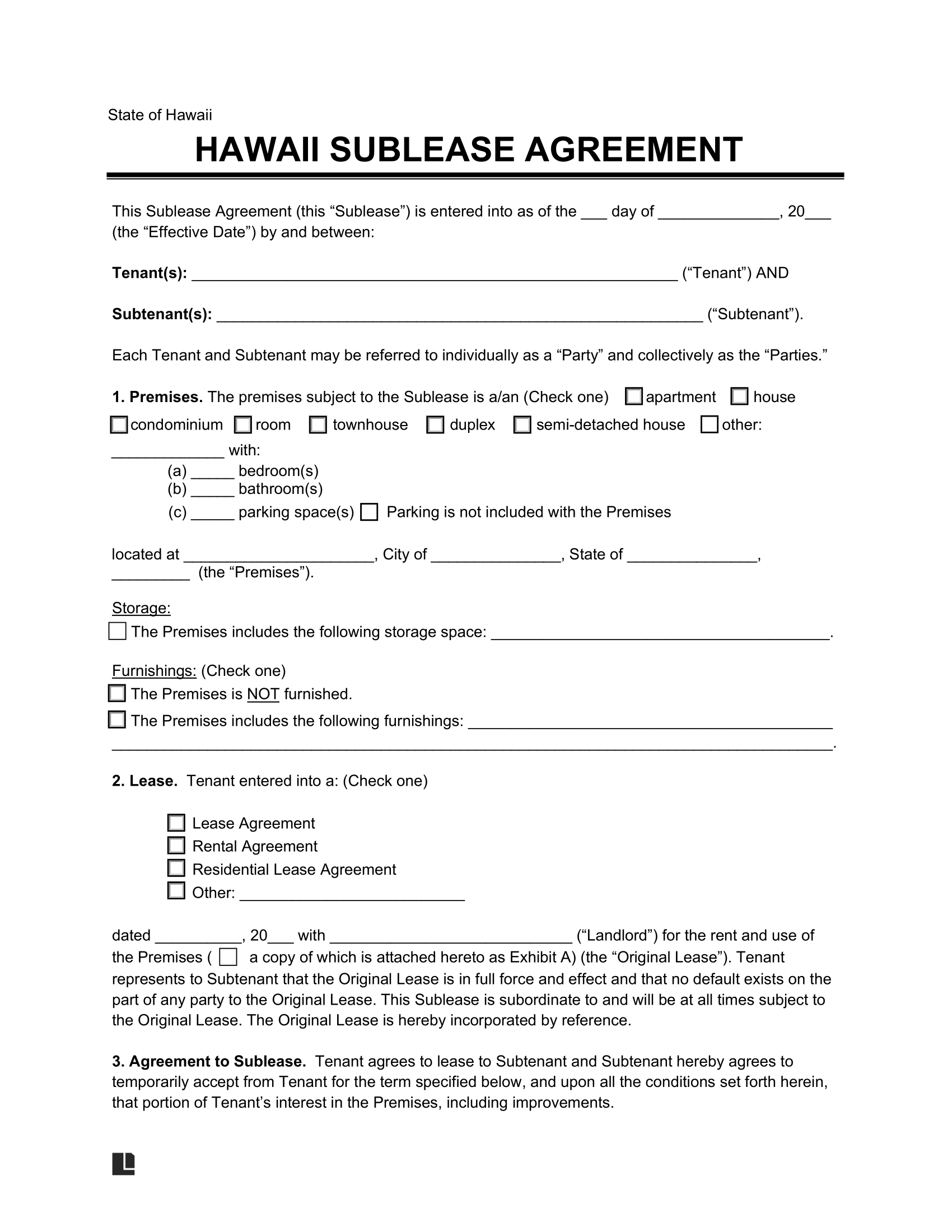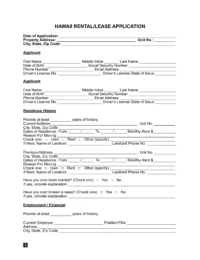A Hawaii sublease agreement is a legal contract between a tenant currently renting property (“sublessor”) and a new tenant (“sublessee” or “subtenant”). If your original lease agreement contains a clause that allows you to sublease, or you have obtained permission from your landlord, you may sublet your rental property.
Once permission is granted, the sublessor is responsible until the termination of the original lease. Additionally, rent owed by the subtenant is paid to the tenant who originally signed the lease, and the original tenant remains liable for any damage the subtenant does to the property.
Laws & Requirements
Sublease and Assignment Provision Laws: Hawaii Revised Statutes § 521-37.
Landlord-Tenant Laws: Chapter 521 of the Hawaii Revised Statutes (Residential Landlord-Tenant Code).
Security Deposit Obligations: The security deposit must be returned within 14 days of the end of the sublease.
Notices: In Hawaii, sublessors must give subtenants five days’ written notice to pay rent or leave. They also need to provide 45 days’ written notice of the intent not to renew the sublease as well as the original lease.
Permission to Sublet
Tenants in Hawaii can sublet without landlord consent unless the lease states otherwise, except for state or county-owned properties.
- Laws: Tenants in Hawaii can sublet without landlord consent unless the lease states otherwise. This rule does not apply to properties owned or administered by the state or a county.
- Explicit Written Consent: The original lease may require the landlord’s consent for subleasing.
- Landlord’s Right to Reject: Landlords have the right to screen and deny subtenants for legally acceptable reasons even after giving consent.
Tax Obligations
Lodgings Tax
- Ordinance 22-7 (2022) made it illegal to operate short-term rentals (30-90 days) outside resort zones. Existing operators may continue while the law is reviewed, per a judge’s ruling.
- Statewide Transient Accommodations Tax (TAT) is 10.25% on rentals of less than 180 days.
Tax Rates by County
- Each county can impose additional TAT and a 4.5% statewide General Excise Tax (GET). On O’ahu, a sublessor may be required to pay a combined tax rate of 17.75%, including General Excise Tax (4.5%), Transient Accommodation Tax (10.25%), and Transient Accommodation Tax (3%).
- Counties may require permits, increasing short-term rental costs.
Filing Frequency
- You’ll be assigned a filing frequency and due dates when you register with the tax authority.
- At the state level, due dates are monthly (20th day of the following month), quarterly (20th day of the following month), semiannually (20th day of the following month), and annually (20th day of the fourth month following the close of the taxable year).
Making Payments
- You can file paper or online returns with the Hawaii Department of Taxation, entering rental charges and paying the tax amount due.
- Even if no rentals occurred during the filing period, you must file “zero dollar returns.” Failure to register and file on time may result in penalties, interest payments, or legal action.
Sample

Related Documents
Rental Application
Helps landlords vet potential tenants properly before signing a lease.

